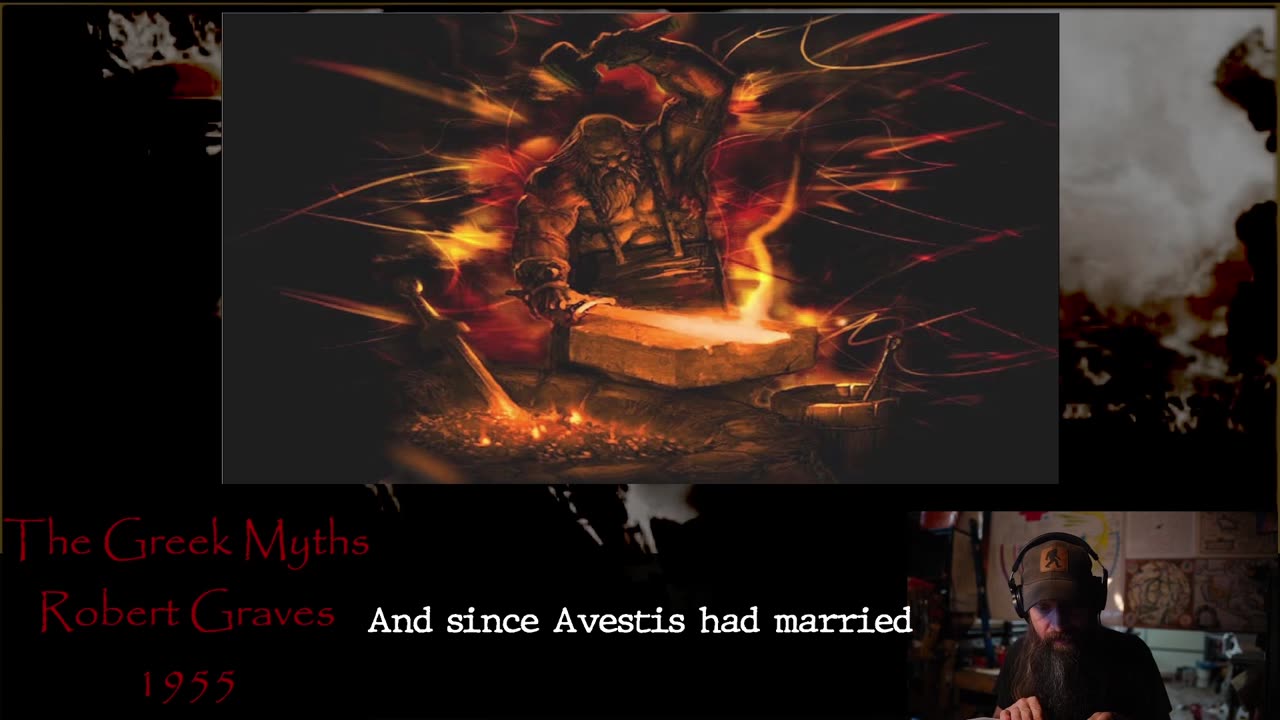Premium Only Content

The Greek Myths - B1 - 23
The Greek Myths - B1 - 23
This video explores the myth of Hephaestus, the Greek god of smithing, detailing his troubled beginnings, his mother's rejection, his rise in power, and his contributions to craftsmanship in mythology.
Key Points:
Birth and Abandonment
Hephaestus was born weak and rejected by his mother, Hera, who dropped him from Olympus due to his disfigurement. He survived the fall into the sea thanks to the sea goddesses Thetis and Eurynome, who cared for him.
Craftsmanship and Innovations
Hephaestus established a smithy in an underwater grotto, where he created various ornamental and useful items. His extraordinary skill eventually caught the attention of Hera, who brought him to Olympus to set up a grander workshop.
Connection with Aphrodite
Hera arranged for Hephaestus to marry Aphrodite, which represented a reconciliation between them. Despite his accomplishments, he faced conflicts with Zeus and was thrown from Olympus again, resulting in his injuries.
Mechanical Creations
Hephaestus was known for his unmatched craftsmanship, creating mechanical women and self-propelled tables, which showcased his combinatory ability of art and technology.
Symbolism and Myths
The narrative connects Hephaestus with ancient beliefs of magic in metalworking and the notion of smiths being akin to sorcerers. The influence of lunar and solar cycles on his mythology was highlighted.
Cultural Significance
Hephaestus’s association with volcanic regions like Lemnos signifies the historical roots of metallurgy in Greece. His traditions resonate in ancient connections found in various cultures, portraying smiths as critical figures in civilization.
-
 LIVE
LIVE
Barry Cunningham
2 hours agoBREAKING NEWS: KAROLINE LEAVITT HOSTS SURPRISE WHITE HOUSE PRESS CONFERENCE!
2,454 watching -
 LIVE
LIVE
StoneMountain64
1 hour agoBLACK OPS 7 Unlocking Weapons and Overclocks (Mouse and Keyboard Player)
205 watching -
 LIVE
LIVE
LadyDesireeMusic
1 hour agoLive Piano 10-3-25
239 watching -
 LIVE
LIVE
ahdedazs
1 hour agoBlack Ops 7 EARLY ACCESS BETA! Second Stream on RUMBLE! *NEW CREATOR*
50 watching -
 2:01:12
2:01:12
The Culture War with Tim Pool
4 hours agoNigeria's Christian Genocide, Media Ignoring Atrocities | The Culture War Podcast
119K64 -
 DVR
DVR
The Shannon Joy Show
1 hour agoKash Patel Doubles Down On Speech Control Opens The Door For Mass Censorship in America (Sponsored)
243 -
 2:08:19
2:08:19
Side Scrollers Podcast
5 hours agoNetflix Execs to TESTIFY Over LGBTQ Agenda + IGN DESTROYS Xbox Game Pass + More | Side Scrollers
14.1K4 -
 1:06:22
1:06:22
The Quartering
2 hours agoAntifa Just Made A Huge Mistake...
70K42 -
 1:25:13
1:25:13
MattMorseTV
2 hours ago $5.45 earned🔴EMERGENCY White House PRESS CONFERENCE.🔴
16.6K17 -
 1:59:20
1:59:20
The Charlie Kirk Show
3 hours agoChristians Under Siege + Shame! Shame! + AMA | O'Neill, Ahern | 10.3.2025
70.4K23
